20% of the surface of Earth’s Eastern Hemisphere is littered with a certain kind of rock. Black, glossy blobs called tektites are spread throughout Australasia. Scientists know they’re from a meteorite strike, but they’ve never been able to locate the crater where it struck Earth.
Now a team of scientists seems to have found it.
The chunk of rock that crashed into Earth about 790,000 years ago, during the Early Pleosticine. It was about 2 km (1.2 miles) wide. Its impact on Earth was enormously powerful, spreading debris across Asia, Australia, and even Antarctica.
The evidence for this strike is in the form of the tektites. They’re pieces of Earthly material, super-heated and melted by the impact, then thrown into the atmosphere. Tektites are mostly centimeter sized blobs of green or black glass, though some are larger. In scientific terms, they’re “quenched molten ejecta.” They fell to the ground over a wide area throughout what’s known as the Australasia strewnfield.
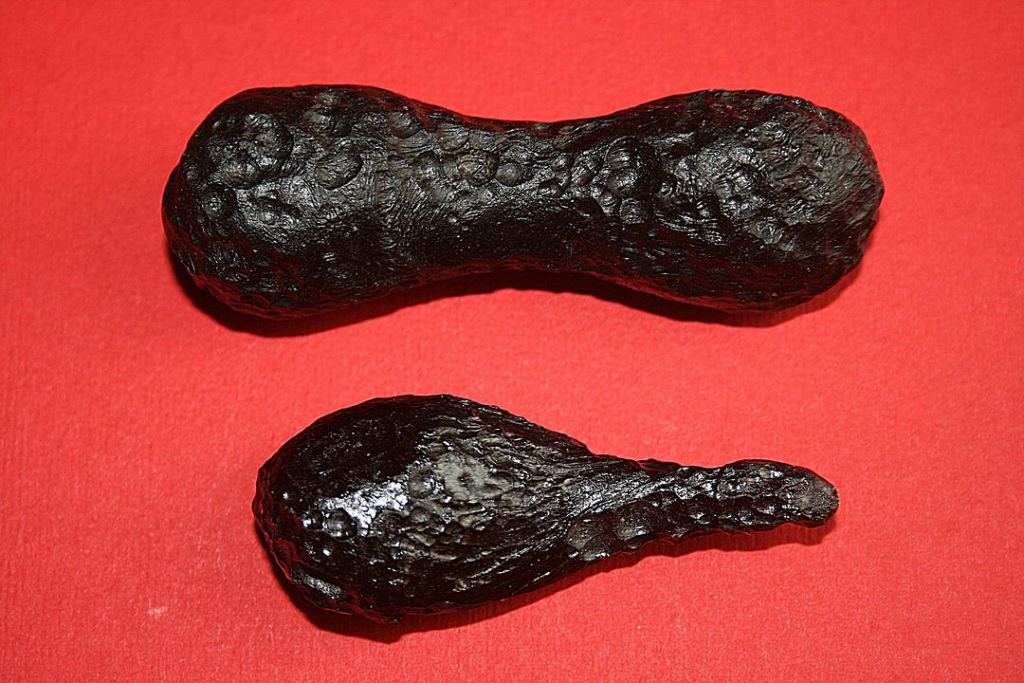
Now a team of researchers say they’ve found the exact location of the strike. The impact crater lies under a feature called the Bolaven Plateau volcanic field in Laos.
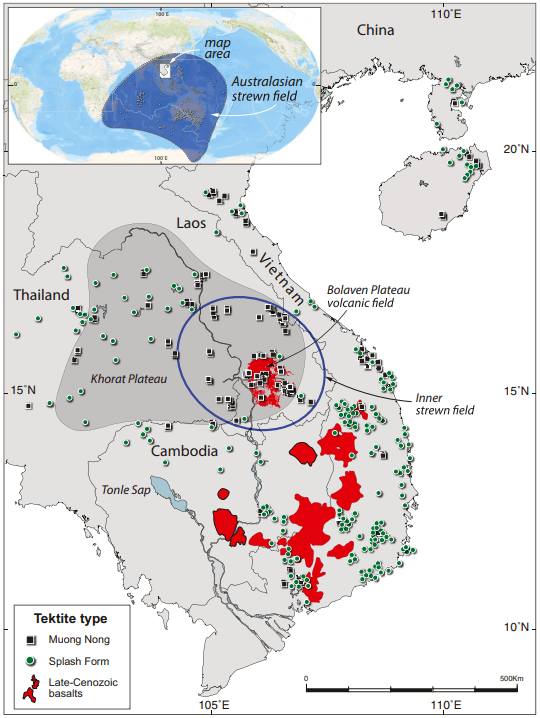
There are four other strewnfields of tektites on Earth, and scientists have found the craters responsible for each of them. But the impact responsible for the Australasian strewn field has been difficult to find. Scientists have spent a century trying. So vexing was the search for a crater large enough to create the tektite field that some scientists proposed multiple smaller impacts to explain it.
In the new paper, a team of researchers say they have four separate lines of evidence showing that the impact crater lies under the Bolaven Plateau volcanic field. The paper is titled “Australasian impact crater buried under the Bolaven volcanic field, Southern Laos.” The paper is published in Proceedings of the National Academy of Sciences of the United States of America.
The strewnfield from this impact is huge, covering about 20% of the Earth’s Eastern Hemisphere. The evidence for the impact crater has for a long time pointed at Indochina, at the northern reaches of the strewnfield. The authors say they’ve found it. It’s about 15 km (9.3 miles) in diameter, and it’s buried under the Bolaven Volcanic field, a young volcanic region where lava flow has buried the crater.
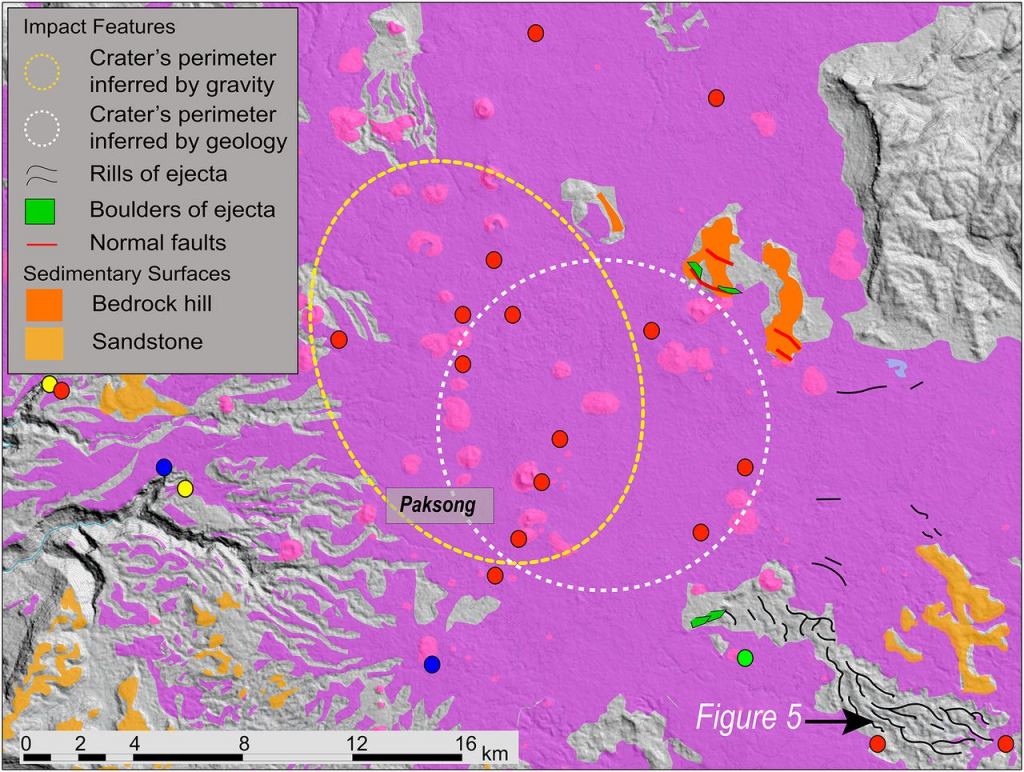
Some of their evidence lies in chemical analysis of the tektites compared to the impact site. They found that a large amount of the chemical variations in the tektites is explained by the bedrock and basalt in the Bolaven Plateau and their weathered derivatives.
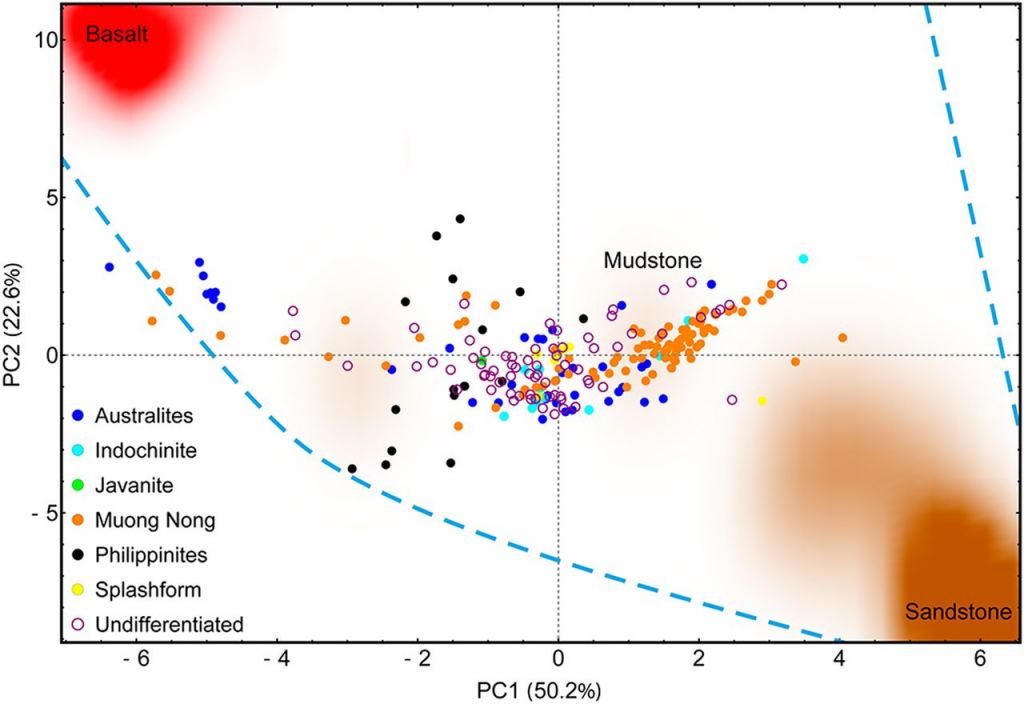
The team also measured the age of the rocks in the volcanic plateau to see if there was a fit. If the crater is buried under the lava, then the lava must be younger than the tektites.
The scientists point out in their paper the appearance of the volcanic plateau. They say that most of the land-forms appear youthful, and radioisotopic dating supports that. The dates show that the area experienced sustained eruptions over a long period of time. They dated 37 samples from the area and found that 14 predate the impact, 21 postdate it, and two are concurrent with the impact. Convincingly, all 12 lava samples from the summit predate the impact.
Craters this large also leave a gravitational fingerprint. The team searched for this anomaly by measuring gravity at over 400 different locations. The authors acknowledge that a volcanic caldera— and empty magma chamber from a volcanic eruption—under the region could create the gravitational anomaly, but they rule that out in this case.
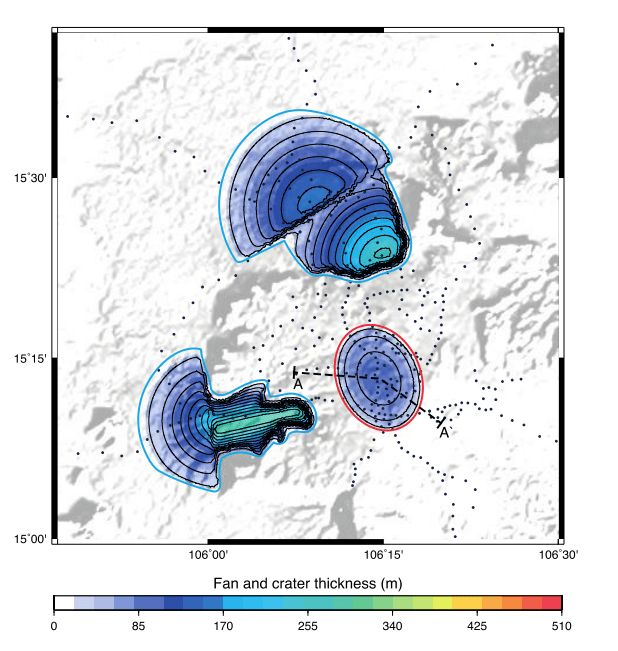
The scientists present more evidence in their paper, including features about 10-20 km away from the impact site. An outcrop there contains boulders of sandstone and mudstone that “appear to have shattered in situ during ballistic emplacement,” as they say in their paper. The properties of some quartz grains nearby provide evidence of shock metamorphism, called planar deformation features, which supports their hypothesis.
This impact is young enough to have influenced humans. Evidence of human activity is intermingled with the Australasian strewnfield. In Guangxi, Southern China, archaeological artifacts including hand axes were found among the tektites, indicating that a population of Homo Erectus was living in the area during and after the impact.
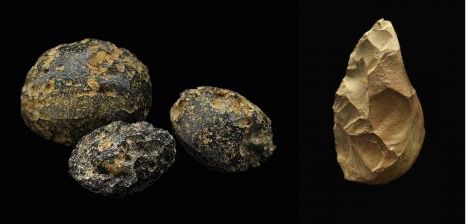
There’s also significant charcoal in the area, and scientists think that the impact started vast fires. One possibility is that the early humans moved into the area after the impact and fires, making tools out of the newly-exposed rock.
Over the last century, there’ve been a lot of attempts to explain the Australasian tektite field and to find the impact crater that caused it. Not all studies were as rigorous as this one. In an interview with CNN, lead author Kerry Sieh said, “But our study is the first to put together so many lines of evidence, ranging from the chemical nature of the tektites to their physical characteristics, and from gravity measurements to measurements of the age of lavas that could bury the crater.”
Even so, this is not definitive. If they have found the impact crater, buried under all that lave flow, the deep rock will show definite signs of a catastrophic impact. There’ll be lots of melting and shattering, and that would put the question to rest, most likely.
But that will require a lot of drilling down to a few hundred meters or more.
More:
- Research Paper: Australasian impact crater buried under the Bolaven volcanic field, Southern Laos
- PNAS Commentary: The Australasian tektite source crater: Found at last?
- Wikipedia Entry: Australasian strewnfield

